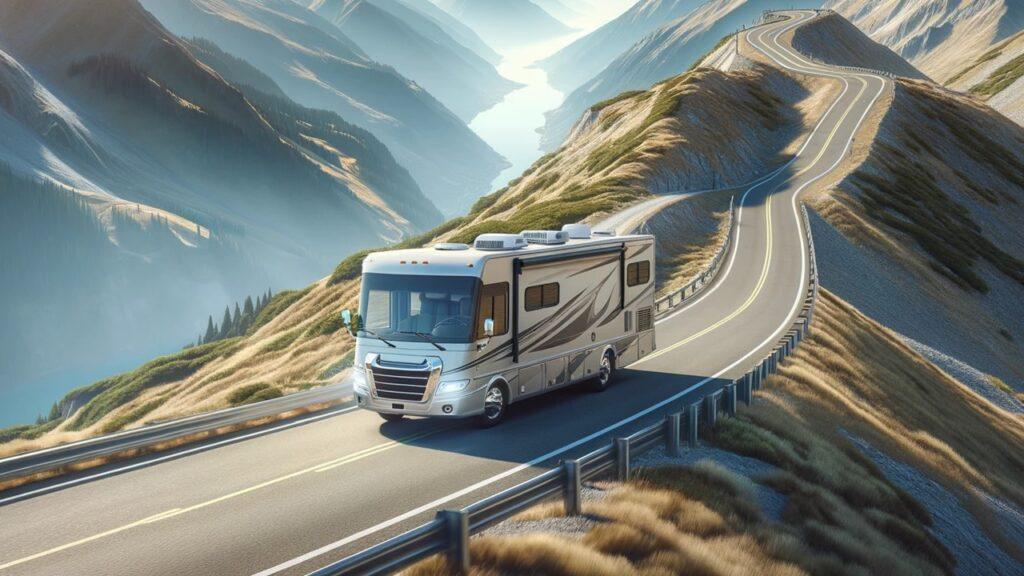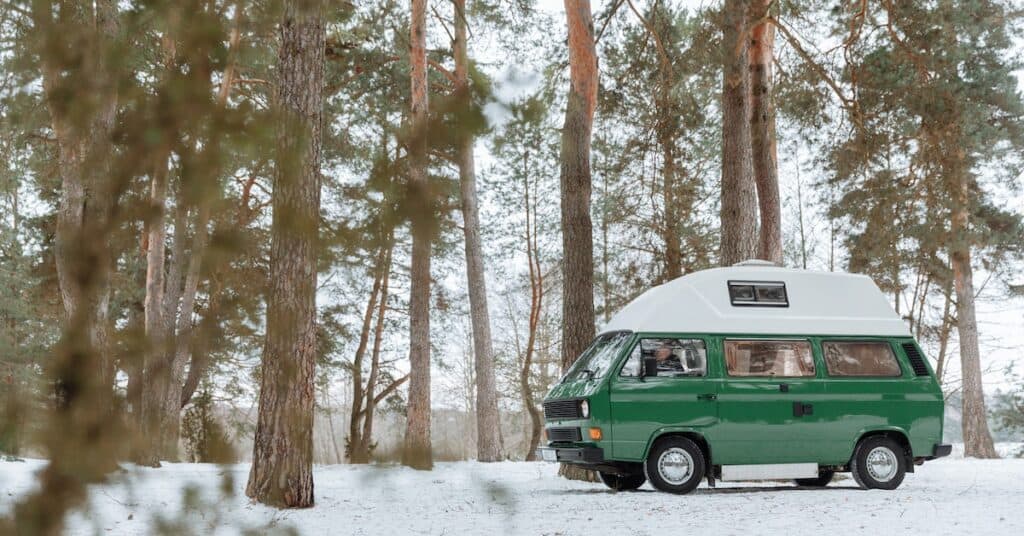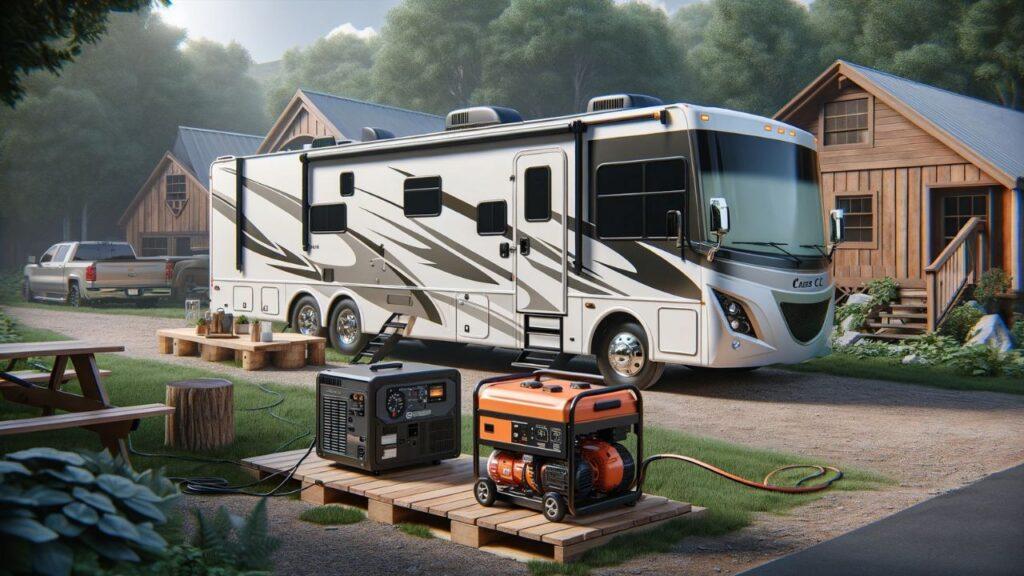
Ice is more than just a luxury when you’re out on the road in your RV. Whether you’re chilling drinks, preserving food, or managing first-aid needs, ice plays a crucial role in enhancing your travel comfort. Understanding how to optimize ice production during your RV trips can significantly elevate your overall experience. By ensuring you have a steady supply of ice, you can keep perishables fresh and enjoy cold beverages even in the summer heat. Moreover, effective ice management helps in saving energy and space, which are often limited in RV living. So, let’s dive into the essentials of optimizing ice production to make your RV adventures even more enjoyable and efficient.
The Basics of RV Freezers for Ice Production
When you’re on an RV trip, having a reliable freezer is a game changer, especially for ice production. Most RVs come with either absorption or compressor-based freezers. Absorption refrigerators are highly versatile appliances, renowned for their ability to function seamlessly with various power sources including propane, 12-volt DC, or 120-volt AC.
This flexibility is great for different camping situations. However, they aren’t the fastest at freezing. They use a heat exchange system that can take a while to get things cold, which can be a downside when you need ice quickly.
On the flip side, compressor-based freezers work just like your home fridge. They run on 120-volt AC power and are much more efficient at keeping things frozen. They freeze items quickly and maintain consistent temperatures, even when it’s scorching outside.
However, they do use more power, which is something to keep in mind if you’re trying to conserve energy while off-grid. Knowing these basics helps you manage your ice production better and ensures you’re never caught without a cold drink.
Limitations and Strengths of RV Ice Maker Freezers
RV freezers have their own set of pros and cons when it comes to making ice. A significant advantage is their versatility. Many RV freezers can switch between different power sources, making them adaptable for various camping setups. They are also designed to maximize space, which is crucial in the limited confines of an RV.
However, there are some limitations. Absorption freezers, which are common in RVs, can struggle in hot weather. Their freezing capacity is limited, and they can take a long time to produce ice. This can be a real drawback if you’re in a hurry for cold drinks. On the flip side, compressor freezers offer significant advantages in speed and reliability, albeit at the expense of higher power consumption. This might not be ideal if you’re relying on solar power or trying to conserve battery life.
Balancing these strengths and limitations is key to optimizing ice production during RVing. Knowing what your freezer can and cannot do will help you plan better and ensure you always have enough ice on hand.
Types of Ice Makers Available for RVs
Choosing the right ice maker can make a big difference in your RV experience. There are three main types to consider: portable ice makers, built-in ice makers, and manual ice trays.
Portable Ice Makers
RV Portable ice makers are a favorite among RVers for their convenience and speed. They are compact and can produce ice in minutes. All you need to do is fill the reservoir with water, plug it in, and wait for the ice. These units are perfect for those hot days when you need ice quickly. However, they do require a 120-volt AC power source, which means they might not be the best option if you’re off-grid.
Built-in Ice Makers
Built-in ice makers are another great option. These are integrated into your RV’s freezer or fridge, providing a seamless and space-saving solution. They automatically produce ice, so you don’t have to worry about constantly refilling a reservoir. The downside is that installation can be more complicated and expensive. Plus, they rely on your RV freezer’s efficiency. If your freezer isn’t the best, your ice production might suffer.
Manual Ice Trays
Manual ice trays are the simplest and most cost-effective option. They don’t require any power and can be used in any type of freezer. Just fill them with water and wait for the ice to form. While they are easy to use and don’t consume energy, they are also the slowest method. If you need a lot of ice quickly, manual trays might not cut it.
Each type of ice maker has its pros and cons. Portable ice makers are quick and easy, built-in models are convenient and space-saving, and manual trays are simple but slow. Choosing the right one depends on your specific needs and camping style.
What to Look for in an RV Ice Maker
When selecting an ice maker for your RV, there are a few key factors to consider. First, think about efficiency and speed. You want an ice maker that can produce ice quickly, especially during those hot summer days. Look for models that can churn out ice in 6-15 minutes.
Next, consider the size and storage capabilities. Space is limited in an RV, so you need a compact ice maker that doesn’t take up too much room. Also, it should have a decent storage bin to hold enough ice for your needs without requiring constant attention.
Energy consumption is another important factor. Since RVs often run on limited power, it’s crucial to choose an ice maker that’s energy-efficient. Some models can run on both 120-volt AC and 12-volt DC power, providing more flexibility. Ensure that the ice maker won’t overload your RV’s power system and can operate efficiently within your setup.
When choosing an RV ice maker, prioritize efficiency, size, and energy compatibility. By keeping these factors in mind, you can find an ice maker that fits your needs and enhances your RVing experience, ensuring you always have a refreshing supply of ice on hand.
Steps to Optimize Ice Production During Your RV Trips
Ice is a crucial component of any successful RV trip, whether it’s for keeping your drinks cold, preserving food, or just having ice packs on hand. Knowing how to optimize ice production during your RV trips ensures you always have a steady supply. Here are some practical steps to maximize ice production in your RV:
Step 1: Choose the Right Ice Maker
Selecting the right ice maker is your first and most important step. Portable ice makers are a great option due to their speed and convenience. They can produce a significant amount of ice in a short time, which is perfect for the on-the-go nature of RVing. Alternatively, built-in ice makers, though more expensive and complex to install, offer continuous ice production without the need for constant refilling. Manual ice trays, while simple, are the least efficient but can serve as a backup.
Step 2: Pre-Cool Your Freezer
Before you start your trip, ensure your RV freezer is at its optimal temperature. A cold freezer makes ice production faster and more efficient. Set your freezer to its lowest setting a few hours before you need to start making ice. This pre-cooling step is essential for optimizing ice production during RVing.
Step 3: Use Filtered Water
The quality of the water you use can affect both the taste and the production speed of ice. Filtered water freezes faster than unfiltered water because it lacks impurities that can lower the freezing point. Moreover, filtered water ensures your ice is clean and tastes better.
Step 4: Optimize Freezer Space
Make sure your freezer is not overcrowded. Air needs to circulate around the ice trays or ice maker for efficient cooling. Arrange items in your freezer to allow for maximum airflow, which helps your ice maker or trays work more efficiently.
Step 5: Maintain Your Ice Maker
Regular maintenance of your ice maker is crucial. Clean the ice maker according to the manufacturer’s instructions to prevent any buildup that can slow down ice production. Ensure that all components are in good working condition and replace any worn-out parts.
Step 6: Manage Power Usage
Efficient power management is key to maintaining ice production. If you’re using a RV 12 volt portable refrigerator freezer or a portable ice maker, make sure your power system can handle the load. Consider using a RV portable solar generator to provide additional power without draining your main battery.
Step 7: Use Insulated Storage
Once your ice is made, store it in an insulated container to keep it from melting quickly. This practice helps maintain your ice supply longer, especially if you’re camping in hot weather. Insulated coolers or dedicated ice bins work best for this purpose.
Step 8: Plan Ahead
Finally, plan your ice production around your needs. If you know you’ll need a lot of ice for a particular day, start making it ahead of time. By staying ahead of your ice needs, you’ll always have a sufficient supply without overloading your ice maker.
By following these steps, you’ll master how to optimize ice production during your RV trips, ensuring you always have plenty of ice on hand. Planning and maintenance are key to keeping your ice supply steady and your RV experience enjoyable.
Energy Management for Ice Making in RVs
Managing energy is critical when it comes to running appliances in your RV, especially energy-intensive ones like ice makers. Here’s how to ensure you’re using your energy efficiently while keeping the ice flowing.
Power Considerations for Running an Ice Maker
Understanding how your RV’s energy system works is the first step. Most RVs have a combination of batteries, solar panels, and sometimes generators. It’s essential to balance the load on your system to avoid power shortages. Running an ice maker alongside other high-power appliances can drain your batteries quickly. To prevent this, try to stagger the use of energy-intensive devices.
To make your ice production more energy-efficient, consider using appliances that match your power capabilities. For example, if you have solar panels, look for an ice maker that can run on 12-volt DC power. This compatibility ensures you’re not solely relying on your RV’s batteries or external generators. Moreover, it’s wise to invest in energy-efficient models, even if they come with a higher upfront cost. These models will save you power in the long run, making optimizing ice production during RVing more manageable.
Solar Power and Ice Production
Utilizing solar power can be a game changer for RVers, especially when it comes to running an ice maker. Solar panels provide a renewable source of energy, perfect for long trips where access to electrical hookups is limited. Installing RV flexible solar panels can harness sunlight efficiently, converting it into power for your appliances.
When planning to use solar power for ice production, ensure your solar setup can handle the load. Calculate the power consumption of your ice maker and match it with your solar system’s output. Most portable ice makers and RV 12 volt portable refrigerator freezers are compatible with solar systems, making them ideal choices. Using solar power not only conserves your main power sources but also provides a sustainable way to keep your ice maker running smoothly.
Managing energy efficiently while producing ice ensures you have a continuous supply without compromising other essential functions in your RV. By understanding your RV’s energy systems and leveraging solar power, you can enjoy a hassle-free, ice-filled RV trip.
Practical Tips for Storing Ice in Your RV
Storing ice effectively in your RV is crucial to keep it from melting too quickly and to ensure you always have a ready supply. Here’s how to do it right.
Ice Storage Solutions
First, let’s talk about the best containers for storing ice. Insulated coolers are your best bet. They are designed to keep ice from melting for extended periods. Choose a cooler with thick walls and a tight seal to prevent warm air from getting in. For smaller quantities, insulated ice buckets or stainless steel containers work well.
To avoid cross-contamination, always store ice in clean containers. Ensure that these containers are used solely for ice and not for storing other items. This practice keeps your ice clean and safe for consumption. Additionally, consider using ice bags for extra protection. These bags can be sealed and help keep the ice separate from other items in your cooler.
Maximizing Ice Longevity
To make your ice last longer, use insulation techniques. Wrapping your ice containers in towels or blankets adds an extra layer of insulation. Place your ice storage containers in the coolest part of your RV. Typically, this would be away from windows and heat sources like the stove or oven. If you have a RV portable air conditioner, positioning your ice containers near it can help maintain a lower temperature.
Strategic placement is also key. Arrange your ice storage so that it’s not exposed to frequent opening and closing of the cooler or freezer. The less you open the container, the longer your ice will last. Using these tips ensures you get the most out of your ice supply, making optimizing ice production during RV trips a breeze.
Enhancing Your RV Trips with Efficient Ice Usage
Using ice efficiently can significantly enhance your RV trips. Beyond just keeping your drinks cold, there are several creative and practical uses for ice.
Creative Uses of Ice Beyond Beverages
Ice can be a lifesaver for your pets. On hot days, place a few ice cubes in their water bowl to keep the water cool. You can also make ice packs to cool them down if they overheat. Ice is also great for first aid. Whether it’s a sprained ankle or a bug bite, having ice packs on hand can provide immediate relief. For making ice packs, simply fill zip-lock bags with ice cubes and wrap them in a towel.
Ice and Outdoor Activities
Ice can take your outdoor activities to the next level. If you’re planning a picnic or barbecue, keeping food items chilled with ice ensures they stay fresh longer. When hiking or biking, bring along a cooler with ice to enjoy refreshing drinks and snacks at your rest stops. If you’re camping near a lake or river, consider bringing a portable cooler with ice to store freshly caught fish. For this, RV portable ice maker machines are a handy tool to have.
By thinking outside the box and using ice in various ways, you can make your RV trips more comfortable and enjoyable. These practical uses highlight the importance of optimizing ice production during RVing.
Wrapping It Up!
To wrap things up, let’s recap the key points we’ve covered about how to optimize ice production during your RV trips. First, understanding your RV’s freezer capabilities is crucial. Absorption and compressor-based freezers each have their pros and cons. Absorption freezers are versatile but can be slow, while compressor freezers are efficient but power-hungry.
Choosing the right ice maker is also vital. Portable ice makers are quick and convenient, built-in ice makers save space and effort, and manual trays are simple but slow. Each type has its unique benefits and drawbacks. Selecting the right one depends on your specific needs and RV setup.
Efficient energy management is essential for running your ice maker. Using solar power can be a sustainable solution, ensuring you have a steady supply without draining your batteries. Pre-cooling your freezer, using filtered water, and maintaining your ice maker are practical steps that can significantly improve ice production.
Storing ice effectively is another critical aspect. Using insulated containers and strategic placement within your RV helps maximize ice longevity. Insulation techniques, such as wrapping ice containers in towels, can also help keep your ice from melting quickly.
Moreover, we explored creative uses of ice beyond beverages. Ice can be used for cooling pets, providing first aid, and enhancing outdoor activities like picnics and barbecues. These uses highlight the importance of having a steady supply of ice on your trips.
Optimizing ice production during your RV trips involves a combination of choosing the right equipment, efficient energy management, and smart storage techniques. By following these tips, you can ensure a constant supply of ice, making your RV adventures more enjoyable and hassle-free. Whether you’re on a short weekend getaway or an extended road trip, having plenty of ice on hand will enhance your overall experience.
Related FAQs
How Long Does It Take to Make Ice in an RV Ice Maker?
Most portable ice makers can produce ice in 6-15 minutes.
Can I Run an Ice Maker on Solar Power?
Yes, using solar panels can efficiently power an ice maker, especially with a good solar setup.
What’s the Best Type of Water for Making Ice?
Filtered water is best as it freezes faster and makes cleaner ice.
How Often Should I Clean My Ice Maker?
It’s recommended to clean your ice maker every month to ensure optimal performance.
Can I Use My RV Freezer to Make Ice?
Yes, but its efficiency varies. Compressor freezers are generally better for making ice quickly.
As outdoor enthusiasts ourselves, we understand the significance of reliable gear that can withstand the elements and support you throughout your journey. We try to provide as much real life information with our guides and how tos to the readers as possible. Our honest and transparent reviews of essential outdoor gadgets and products are rooted in testing and experience. We take great satisfaction in offering unbiased evaluations, ensuring that you can make informed decisions when investing in outdoor gear. As an affiliate website, we may earn a small commission from some of the products we feature. However, rest assured that our opinions are not influenced by this, and your trust is always our top priority.



